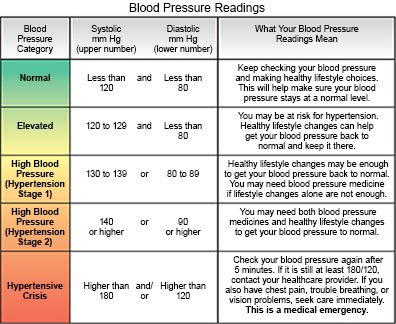Hypotension
Medically reviewed by Drugs.com. Last updated on Apr 6, 2025.
Hypotension is a blood pressure (BP) that is lower than it should be. Hypotension may be mild, serious, or life-threatening.
 |
WHILE YOU ARE HERE:
Informed consent
is a legal document that explains the tests, treatments, or procedures that you may need. Informed consent means you understand what will be done and can make decisions about what you want. You give your permission when you sign the consent form. You can have someone sign this form for you if you are not able to sign it. You have the right to understand your medical care in words you know. Before you sign the consent form, understand the risks and benefits of what will be done. Make sure all your questions are answered.
Medicines:
- Alpha-adrenoreceptor agonists may increase your BP and decrease your symptoms.
- Steroids help prevent salt loss from your body. Steroids may also help increase the amount of fluid in your body and raise your BP.
- Vasopressors help constrict (make smaller) your blood vessels and increase your BP. Vasopressor medicines may increase the blood flow to your brain and help decrease your symptoms.
- Antidiuretic hormone helps control your BP and helps decrease your need to urinate during the night.
- Antiparkinson medicine may help increase your standing BP and decrease your symptoms.
- Erythropoietin increases the amount of red blood cells you have. More red blood cells increases your blood volume, and may increase your standing BP. This medicine may also treat anemia and problems with your nervous system.
- Antibiotics may be needed to treat a bacterial infection.
Monitoring:
- A heart monitor is also called an ECG or EKG. Sticky pads placed on your skin record your heart's electrical activity.
- An arterial line is a tube placed into an artery (blood vessel), usually in the wrist or groin. An arterial line may be used for measuring your blood pressure or for taking blood.
- A CVP (central) line is an IV catheter or tube placed into a large blood vessel near your collarbone, in your neck, or in your groin. The CVP line may be used to give medicines or IV fluids. It may also be hooked up to a monitor to take pressure readings. This information helps healthcare providers check your heart.
- Intake and output may be measured. Healthcare providers will keep track of the amount of liquid you are getting. They also may need to know how much you are urinating. Ask healthcare providers if they need to measure or collect your urine.
Drugs used to treat this and similar conditions
Orvaten
Orvaten is used for dysautonomia, hypotension, postural orthostatic tachycardia syndrome
Omvoh
Omvoh is used to treat moderate to severe ulcerative colitis or Crohn's disease in adults. This ...
Northera
Northera (droxidopa) is used to treat neurogenic orthostatic hypotension. Includes Northera side ...
Tests:
- A blood or urine sample may be checked for anemia or other conditions causing your hypotension.
- An EKG records the electrical activity of your heart. It is used to check for damage or other heart problems that may be causing your hypotension.
- Autonomic nervous system tests may show changes in how fast your heart beats when you take deep breaths. Your healthcare provider may also check for changes in your BP while you put your hand in ice cold water.
- A 24 hour urine test is used to measure and record how much you urinate. At the end of 24 hours, the urine will be sent to a lab for tests. During this test you will need to collect all of your urine for 24 hours. You will urinate into a container and the urine will be put into a jug. The jug will need to be kept cold. If you urinate during the night, you will need to save that urine.
- An echocardiogram is a type of ultrasound, also called an echo. An ultrasound uses sound waves to show pictures of your heart on a monitor. An ultrasound may be done to show how your heart moves when it beats.
Treatment:
- Compression stockings or an abdominal binder help blood return to your heart and decrease your hypotension.
- IV fluids may be used to increase your BP if you are dehydrated, have blood loss, or sepsis.
- A blood transfusion replaces blood in your body to help it work properly. A blood transfusion is given through an IV. Blood is tested for safety before it is used.
Treatment options
The following list of medications are related to or used in the treatment of this condition.
RISKS:
Without treatment, your symptoms may get worse. You may faint or fall often, which can lead to injuries, such as a broken bone. You may be at increased risk for depression, confusion, and memory problems. Hypotension may cause decreased blood flow to your brain and heart. This may lead to a stroke or heart attack and be life-threatening. Sepsis-related hypotension is life-threatening without treatment.
CARE AGREEMENT:
You have the right to help plan your care. Learn about your health condition and how it may be treated. Discuss treatment options with your healthcare providers to decide what care you want to receive. You always have the right to refuse treatment.© Copyright Merative 2025 Information is for End User's use only and may not be sold, redistributed or otherwise used for commercial purposes.
The above information is an educational aid only. It is not intended as medical advice for individual conditions or treatments. Talk to your doctor, nurse or pharmacist before following any medical regimen to see if it is safe and effective for you.
Learn more about Hypotension
Treatment options
Care guides
Further information
Always consult your healthcare provider to ensure the information displayed on this page applies to your personal circumstances.
